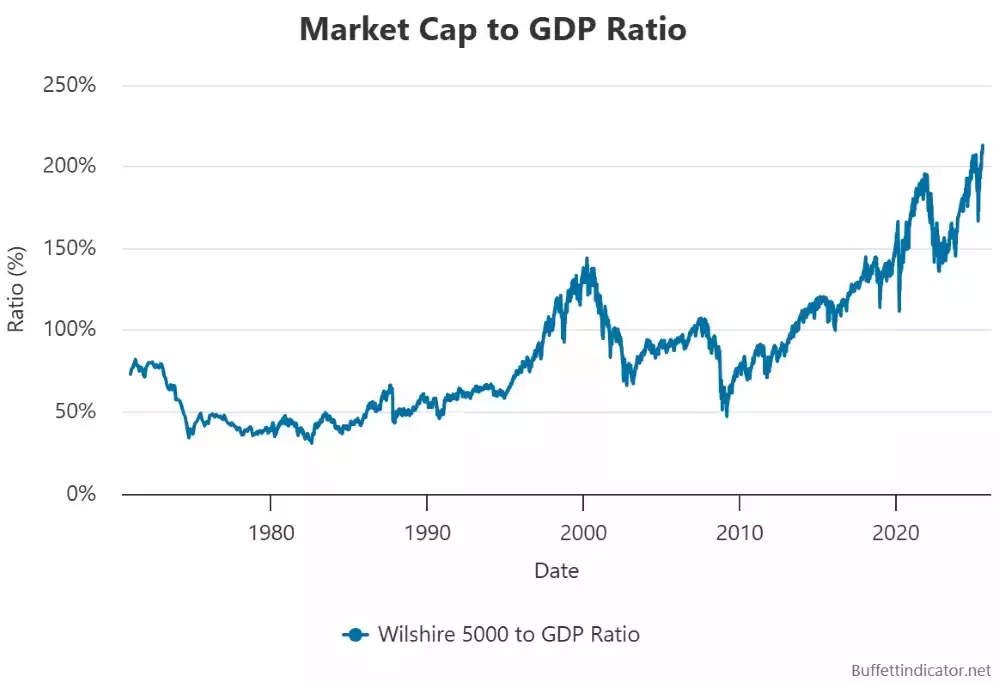Buffett Indicator Worse than Ever
News
|
Posted 28/07/2025
|
2157
The Warren Buffett indicator may be worth looking at after the recent stock market rally. The S&P 500 just logged another record close, capping a July run that also gave the Nasdaq and Dow new highs. Heavy demand for mega‑cap tech, a steady delivery of good earnings, and hopes that the Federal Reserve will pivot to rate cuts later this year have kept the rally going.
Yet under all the exuberance, the market’s favourite warning signal is overheating. The Warren Buffett Indicator — the ratio of the total value of U.S. stocks to the nation’s gross domestic product — stood at roughly 200 per cent at the end of the March quarter. That's nearly two standard deviations above its long‑term trend and the highest reading on record. Anything much above 100 per cent signals overvaluation—200 per cent plants us firmly in bubble territory.

History suggests taking this signal seriously. The indicator pierced similar extremes in early 2000, just before the "Dot‑com crash", and again in late 2021, months ahead of the brutal 2022 tech sell‑off. Today’s surge looks even steeper, driven not just by AI‑euphoria but even by the return of meme stock traders. MarketWatch notes that valuations in some money‑losing small‑caps now rival those heady 2021 levels, a setup that leaves little room for disappointment if earnings or rates disappoint.
Compounding the anxiety, Warren Buffett himself is hoarding cash. Berkshire Hathaway ended the first quarter with a record‑breaking pile north of $340 billion, a stance the 94‑year‑old investor typically adopts only when bargains are scarce, and risks look
asymmetric. While Buffett rarely times the market, his preference for Treasury bills over equities underscores how stretched valuations have become.
None of this guarantees an imminent crash. Bulls argue that robust corporate balance sheets, easing inflation, and the productivity boost from generative AI justify higher multiples. But the Buffett Indicator is a blunt reminder that share‑price gains have outstripped the real economy’s ability to keep up. When sentiment finally cools, liquidity can vanish faster than many investors expect.